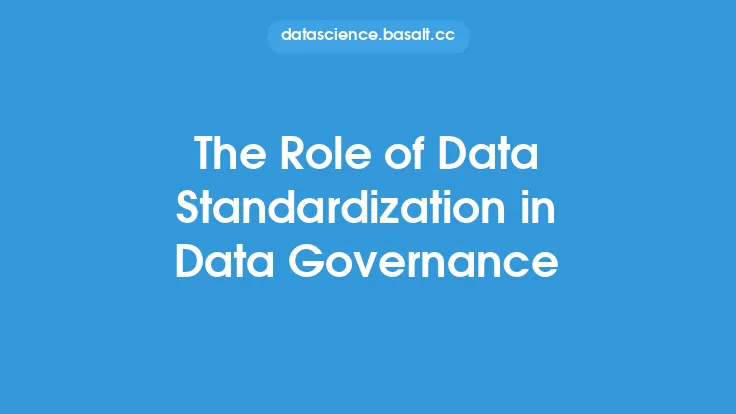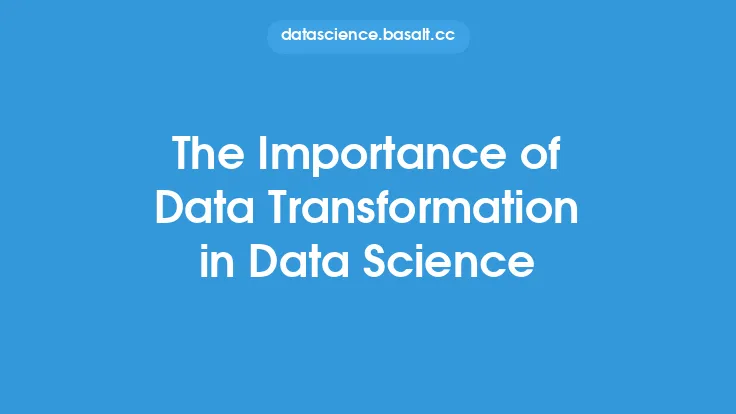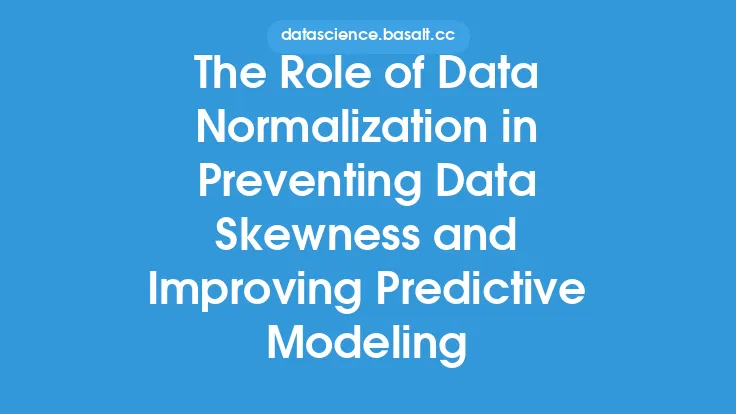Data transformation is a crucial step in the data analysis process, and standardization plays a vital role in this process. Standardization is the process of transforming data into a common format, making it easier to compare and analyze. In this article, we will delve into the role of standardization in data transformation, its benefits, and how it is applied in various data analysis tasks.
Introduction to Standardization
Standardization is a technique used to rescale data to a common range, usually between 0 and 1, to prevent features with large ranges from dominating the model. This is particularly important in machine learning algorithms, where features with large ranges can affect the performance of the model. Standardization is also known as normalization, although normalization can refer to other types of scaling as well. The most common standardization technique is the z-score standardization, which subtracts the mean and divides by the standard deviation for each feature.
Benefits of Standardization
Standardization has several benefits in data transformation. Firstly, it helps to prevent features with large ranges from dominating the model. This is because features with large ranges can have a greater impact on the model's performance, which can lead to biased results. Secondly, standardization helps to improve the interpretability of the results. By rescaling the data to a common range, it becomes easier to compare the results across different features. Finally, standardization can help to improve the performance of the model by reducing the effect of outliers.
Types of Standardization
There are several types of standardization techniques, each with its own strengths and weaknesses. The most common standardization techniques are:
- Z-score standardization: This is the most common standardization technique, which subtracts the mean and divides by the standard deviation for each feature.
- Min-max standardization: This technique rescales the data to a common range, usually between 0 and 1, by subtracting the minimum value and dividing by the range of the data.
- Log standardization: This technique is used for data that has a large range of values, and is rescaled using the logarithm of the data.
Standardization in Data Preprocessing
Standardization is an essential step in data preprocessing, which is the process of cleaning and preparing the data for analysis. Data preprocessing involves several steps, including handling missing values, removing outliers, and transforming the data into a suitable format. Standardization is usually performed after the data has been cleaned and transformed, and is used to rescale the data to a common range.
Standardization in Machine Learning
Standardization is a critical step in machine learning, where it is used to rescale the data to a common range. This is particularly important in algorithms that use distance-based metrics, such as k-nearest neighbors and clustering algorithms. Standardization is also used in neural networks, where it helps to improve the performance of the model by reducing the effect of outliers.
Challenges and Limitations of Standardization
While standardization is a powerful technique, it also has several challenges and limitations. One of the main challenges is that standardization can be sensitive to outliers, which can affect the performance of the model. Another challenge is that standardization can be computationally expensive, particularly for large datasets. Finally, standardization can be difficult to interpret, particularly for datasets with multiple features.
Best Practices for Standardization
To get the most out of standardization, it is essential to follow best practices. Firstly, it is essential to understand the distribution of the data before applying standardization. Secondly, it is crucial to choose the right standardization technique for the dataset. Finally, it is vital to evaluate the performance of the model after standardization to ensure that it has improved.
Conclusion
In conclusion, standardization plays a vital role in data transformation, and is an essential step in data preprocessing and machine learning. By rescaling the data to a common range, standardization helps to prevent features with large ranges from dominating the model, improves the interpretability of the results, and reduces the effect of outliers. While standardization has several challenges and limitations, following best practices can help to get the most out of this powerful technique. As data analysis continues to evolve, the importance of standardization will only continue to grow, making it an essential skill for data analysts and machine learning practitioners.





